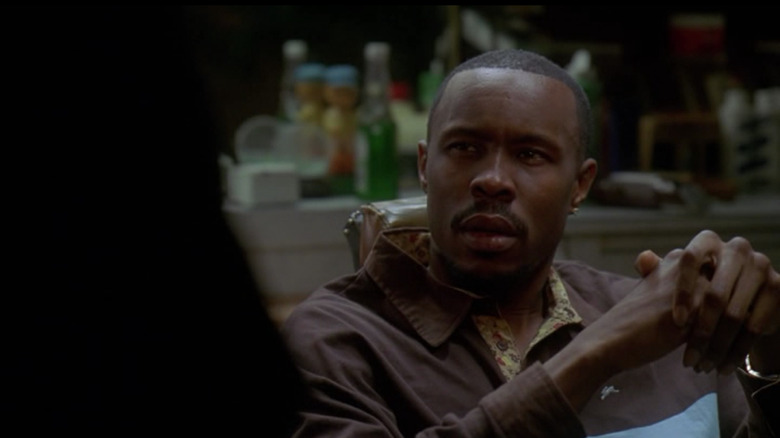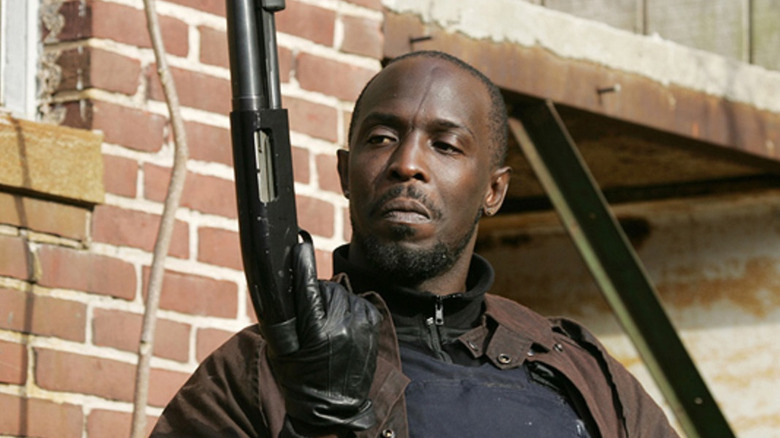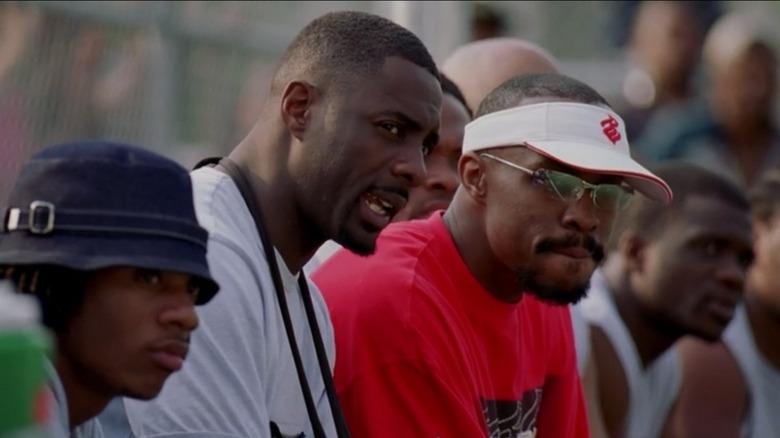The Real-Life Inspiration For The Wire's Avon Barksdale
The first three seasons of "The Wire" centered around Avon Barksdale, a powerful drug dealer in West Baltimore who serves as the police characters' primary antagonist in season 1. He's arrested at the end of the season and sentenced to prison, but he remains unperturbed, repeating the motto multiple times that there are only really two days you spend in prison: "the day you get in, and the day you get out."
Avon is released far earlier than the police expected at the beginning of season 3 and resumes his partnership with the ambitious and cold-hearted Stringer Bell (Idris Elba). Their relationship gradually devolves over the next few episodes and Avon is arrested again, this time for good, but not before cementing himself as one of the most compelling and memorable TV criminals of all time.
Like several other characters on "The Wire," the inspiration for Avon drew from a real person from Baltimore. According to the Baltimore Sun, the real Avon was named Nathan Barksdale, an infamous head of a violent heroin operation in Baltimore's Murphy Homes public housing complex in the 1980s. His nickname was "Bodie," which was given to one of Avon's crew members in the show. Also like Avon, Nathan was arrested and sentenced to prison (15 years in his case), released and then arrested again for drug-related crimes in 2014.
In 2010, Barksdale was interviewed by Wood Harris, the actor who played him in "The Wire," in the unreleased docudrama "The Avon Barksdale Story: Legends of the Unwired." In 2016, he died in a federal medical prison at 54 years old.
Shoutouts to Westside players
Despite the connections, the characterization of Avon Barksdale through the first three seasons of "The Wire" was not based directly on Nathan Barksdale. "There are some anecdotal connections between his story and a multitude of characters," showrunner David Simon told the Baltimore Sun. "We mangled street and given names throughout 'The Wire' so that it was a general shoutout to the Westside players. But there is nothing that corresponds to a specific character."
This is part of what makes the show feel so real, and also what occasionally put the show under mild criticism. One such incident was in season 5, where fan-favorite character Omar Little (Michael K. Williams) survived a desperate jump from the balcony on a building's fourth floor. He was severely injured, but the fact that he was able to survive and walk away at all struck a lot of fans as unrealistic. For another show it wouldn't be a huge deal, but for a show that prided itself on its unflinching realism, it was a legitimate problem.
How did the show mess up like this? Well, turns out it didn't: Donnie Andrews, the real-life inspiration for Omar, survived a similar jump in a similar situation. Not only that, but Andrews claims he jumped from the sixth floor of the building, not the fourth. The show made Omar's jump lower than the real-life story to make it feel more believable. They say truth is stranger than fiction, and that's certainly true here. As much as "The Wire" was almost entirely fictional, it was one of the events taken directly from real life that ended up stretching viewers' suspension of disbelief the most.
Letting Westside players on the show
Although Nathan Barksdale never got to star in the show, plenty of the police officers and drug dealers that served as inspiration for many characters of "The Wire" got the chance to play a minor role. Donnie Andrews got a part as Omar's associate in seasons 4 and 5, and his character was present in the scene where Omar jumps off the balcony. (Unfortunately, Andrews' character does not survive the scene, having been shot in the head.) One of the other inspirations for Avon Barksdale, former drug trafficker Melvin Williams, got a minor recurring role as the Deacon in seasons 3 through 5.
There's also Felicia Pearson, who was born in a foster home, became a drug dealer as a teenager, went to prison for second-degree murder, and later got a guest role in season 3 of "The Wire," which expanded into a prominent role as Snoop in seasons 4 and 5. With her laid-back demeanor contrasting her calm, unfeeling approach to murder, Snoop became one of the series' most memorable characters.
It makes sense that "The Wire" was filled with so many former criminals in its minor roles — its creators, David Simon and Ed Burns, are both Baltimore natives, with Simon having worked as a journalist for the Baltimore Sun and Burns working as a homicide detective for 12 years. Creating a sense of authenticity to the Baltimore-based show was a priority for them. And considering how critical "The Wire" was of the city's justice system with its high recidivism rate, it was certainly fitting for them to give recently released inmates a helping hand.


